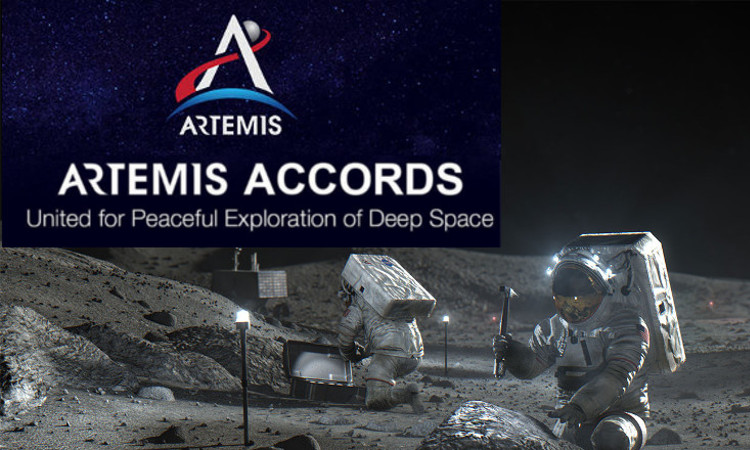
Japanese Aerospace Exploration Agency (JAXA) and Toyota working together – picture from the Interweb
Since 2019, the Japanese Aerospace Exploration Agency (JAXA) and Toyota have been working together to create an recreational vehicle (RV) knockoff for off-roading on the moon, not that the moon has a lot of roads. Named “Lunar Cruiser” after the Toyota famous Land Cruiser, the pressurized rover (a glorified camper van crossed with a mobile lab unit) will allow astronauts to spend several days on the surface of the moon at a time exploring and experimenting. (Note: All the American and scientific websites are saying “days”, the Toyota website says “approximately a month”. That is some ambitious goals they got there.)
 America and Japan have signed treaties (which hopefully future presidents will not renege on) to bring the rover to the moon. America is also developing a smaller, non-pressurized rover, similar to the beach buggy used in the past where spacesuits will be required to ride. The plan is to have all of these vehicles on-line for the later Artemis moon landings – around 2030.
America and Japan have signed treaties (which hopefully future presidents will not renege on) to bring the rover to the moon. America is also developing a smaller, non-pressurized rover, similar to the beach buggy used in the past where spacesuits will be required to ride. The plan is to have all of these vehicles on-line for the later Artemis moon landings – around 2030.
The really cool part is the Lunar Cruiser is expected to have a ten-year life span. Once it has touched down on the moon, it will be reused for multiple missions. (And we know how long Toyota products usually last beyond their intended lifespan!)
Solar panels in the tubes stored on its side will allow the vehicle to charge when not in motion and between missions.
Now to get into all the technology being developed for the moon Land Cruiser which will also benefit us here on earth:
- Not directly mentioned on the Toyota website but clearly shown on the videos are the new ever-inflated tires used in construction, only metal version instead of rubber since rubber doesn’t do well in moon temperature extremes and airless surface. Air pressurized wheels aren’t the best for a moon environment. (Bridgestone Corporation is helping with these.)
- Reducing strain on the astronauts working by making most of the driving automated. Yep, an automated “car” specifically build for off-the-road consideration (and 1/6 gravity). The astronauts will only need to intervene for the hardest parts. – technologies feeding into this include “radio signal navigation, safe driving route generation, an intuitive driving control, <and> driving assistance with a superimposed display.” (Toyota)
- With the cruiser being automated (for the most part), when astronauts aren’t in residence, the vehicle can still explore the surface whenever the cruiser is on the sunlight side of the moon. – For earth technology benefits: “remote and automated scanning of disaster areas or goods transportation in dangerous zones.” (Toyota)
- Rollover prevention.
- The deployable solar panels can also help make Earth-side vehicles more sustainable for remote villages and refugee camps.
Are you reading to go on some serious off-the-road RV-ing? I know I am.
Bibliography
Nevistanegocios. “Lunar Cruiser’: El Vehiculo de Exploracion Espacial Tripulado de Toyota y Jaxa ya Tiene Nombre.” 2020 September 7. (https://revistanegocios.es/lunar-cruiser-el-vehiculo-de-exploracion-espacial-tripulado-de-toyota-y-jaxa-ya-tiene-nombre/ – last viewed 5/22/2024)
Pearlman, Robert Z. “Japanese astronauts will join NASA moon landings in return for lunar rover.” space.com. 2024 April 11. (https://www.space.com/japan-astronauts-moon-rover-artemis-agreement – last viewed 5/22/2024)
Smith, Marcia. “Biden and Kishida: First Non-US Astronaut on the Moon will be Japanese.” SpacePolicyOnline.com. Updated 2024 April 11. (https://spacepolicyonline.com/news/biden-and-kishida-first-non-us-astronaut-on-the-moon-will-be-japanese/ – last viewed 5/22/2024)
Toyota. “Toyota’s Lunar Cruiser from Earth to the moon and back.” 2023 August 30. (https://www.toyota-europe.com/news/2023/lunar-cruiser – last viewed 5/22/2024)
Toyota Motor Corporation. “Pressurized Rover (New Image) Movie.” 2023 October 30. (https://www.youtube.com/watch?v=FkJv3ciCf3M – embedded link above)
ZigWheels. “Meet Toyota Lunar Cruiser, the one built for the moon.” 2020 August 21. (https://www.zigwheels.my/car-news/meet-toyota-lunar-cruiser-the-one-built-for-the-moon – last viewed 5/22/2024) – I think the author of the article is Purva Jain.



